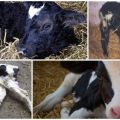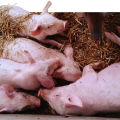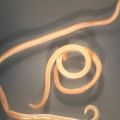Causes and symptoms of colibacillosis in pigs, treatment methods, vaccine and prevention
Everyone who has decided to start pig breeding should remember that for the proper organization of production it is necessary to provide conditions for animals. It is necessary not only to feed the pigs properly, to care for them, but also to be aware of common diseases. Among the most dangerous pathologies is colibacillosis in pigs. Knowing its symptoms, methods of diagnosis, treatment and prevention, the livestock is saved as much as possible.
Causes and pathogens
The primary cause of colibacillosis is the pathogenic bacillus Escherichia coli. To date, more than 9000 of its variations are distinguished. Only a few of them are capable of infecting pigs. The most widespread are two types - enterotoxigenic and enteroinvasive.
The bacteria are highly resistant to various environmental conditions - they live in soil and water for about 70 days, in feces - 30 days. When heated to 80 ⁰С, they remain viable for no more than 15 minutes, when boiled they die immediately. The source of the pathogenic bacillus most often becomes infected or recovered pigs. Sows often transmit colibacillosis to piglets through feces, urine, colostrum. Another way of infection is water, food, utensils. Rodents can transmit pathogenic strains.
Several factors act as provoking:
- lack of micro and macro elements;
- unbalanced diet;
- lack of sunlight;
- lack of full walking.

Symptoms and forms of the disease
The state of the immune system of animals and the pathogenicity of the bacillus affect how colibacillosis proceeds:
- super-fast or lightning fast;
- acute - peaks;
- subacute or descending in the direction of recovery;
- chronically or for a long time.
The main symptoms of colibacillosis include:
- diarrhea;
- dehydration of the animal body;
- general intoxication;
- refusal to eat;
- impaired coordination of movement;
- convulsions;
- body temperature reaches 42 ⁰С;
- damage to internal organs as a result of the spread of infection;
- depletion of the body.

In small pigs, infestation is signaled by unformed stools, mucus in the nasal passages, cyanosis of the integument, edema of the eyelids, submandibular part, and neck.
The symptomatology of colibacillosis depends on the form of the pathology - septic, enterotoxemic, enteric.
Septic
This form is observed in newborn piglets. The course of the pathology is acute or hyperacute. The lethal outcome in young animals occurs within 1-2 days.The rate at which the disease progresses depends on how quickly the bacterium enters the bloodstream and spreads throughout the body. External signs of colibacillosis can be as follows:
- complete refusal of animals to eat;
- depressed sluggish state of piglets;
- persistently high body temperature;
- change in coordination of movements;
- heart and respiratory failure;
- purulent discharge from the eyes;
- uncontrollable diarrhea;
- dehydration of the body;
- general blood poisoning as a result of infection.
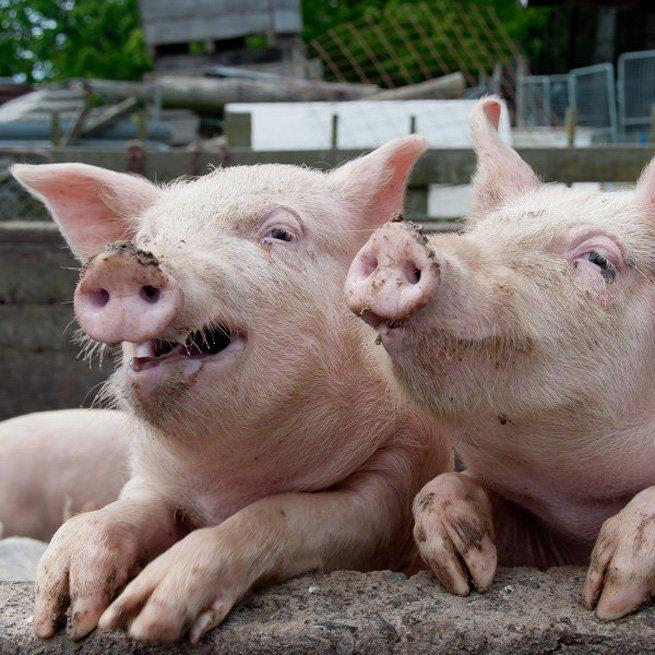
Enterotoxemic
After the piglets are weaned from the sow, they may be struck by the enterotoxemic form of colibacillosis. It is acute, the first manifestations are observed after 3-12 hours. Mortality is up to 50% of the livestock. After the bacillus enters the small intestine, animals experience a number of symptoms:
- loss of appetite;
- the animal becomes unnecessarily excitable due to damage to the central nervous system;
- twitching response to touching the pig's skin;
- convulsions;
- the animal walks in a circle;
- diarrhea;
- transition to the state of collapse.
Enteric
In this form, the pathology proceeds subacutely or chronically. Animal mortality is low. The disease is determined by the lethargy of the individual, its apathy, complete refusal to eat, uncontrollable diarrhea, dehydration.
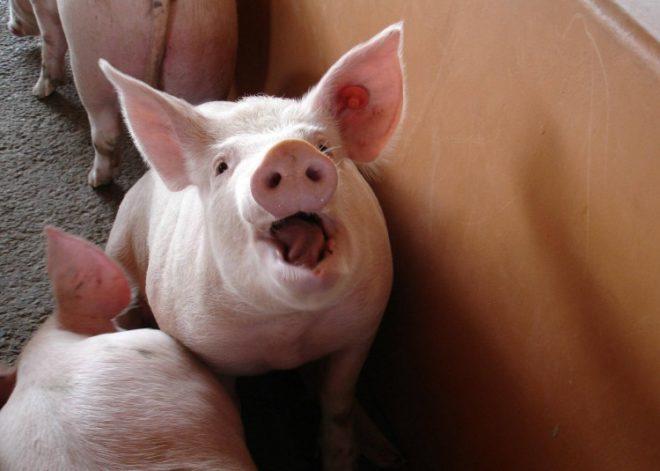
Disease diagnosis methods
To diagnose colibacillosis, an assessment of clinical symptoms and analysis of animal feces are carried out. If the death has already begun, samples from the dead individuals should be sent for research. For analysis, fresh feces are collected from several (5-10) piglets. To ensure that the results are not distorted, they check the material of individuals who have not been given antibiotics. If pathogenic bacteria are isolated from the spleen and brain, the diagnosis of colibacillosis is confirmed.
After death, the infected piglets visually detect bloody fluid in the lungs, serous fluid in the pericardial region, hemorrhages in the intestines, swelling of the lymph nodes, flabbiness of the liver and kidneys, emaciated and pale muscles.
The diagnosis of colibacillosis implies the need to exclude other pathologies: dysentery, enteritis, erysipelas, plague.
Rules for the treatment of colibacillosis (escherichiosis) in piglets
The effectiveness of the treatment of colibacillosis depends on how quickly it is started. The disease is spreading rapidly, so you can't hesitate to call a special service. Based on analyzes, the veterinarian prescribes the dosage of drugs, taking into account the age, weight and condition of the animals. Treatment of escherichiosis consists in eliminating the symptoms:
- dehydration - sodium chloride is used;
- disorder of the gastrointestinal tract - probiotics, drugs to fight inflammation are used;
- heart disorders - caffeine benzoate;
- poisoning of the body - enterosgel, activated carbon.

Piglets are offered feed with a high content of vitamin C, which helps to restore the immunity of animals, they begin to eat better.
Why is the disease dangerous?
Colibacillosis poses a great threat to pigs for several reasons:
- piglets are affected at a very early age;
- bacteria spread very quickly;
- the piglets' body is rapidly losing water due to diarrhea;
- acidosis occurs;
- after the penetration of bacteria into the blood and lymph, a general infection occurs;
- mortality due to infection is up to 100%.
Vaccine administration
The best way to fight the disease is vaccination. In order for the piglets to gain immunity, the sow is vaccinated one and a half months before farrowing twice with an interval of 2 weeks. A polyvalent vaccine is used. Already at the age of 7 days, piglets develop active immunity.Later, 3 weeks before weaning, they are vaccinated with the same drug as the sow.

For greater effectiveness, veterinarians advise the use of an autovaccine. Piglets are vaccinated with it already at 5 days of age. Colibacillosis is treated with the same serum, using in an increased dose.
Other prevention measures
In order to maximally protect the livestock from infection, a number of preventive measures are taken:
- Sows are transferred to separate queen cells 2 weeks before farrowing.
- Before this, the room is disinfected, the contaminated animal body is washed and treated with formalin solution.
- The vacated room is cleaned with soda ash and further processing with a strong stream of water.
- A week before farrowing, the animal's diet is halved.
- Immediately before farrowing, the pigs are treated with a disinfectant solution (rear).
At an early suspicion of infection, the animals are isolated and transferred to a new, previously unused place. The quality of the feed is improved. In the acute course of colibacillosis, they begin taking medications as early as possible.


